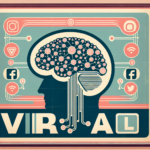“`html
Introduction to Social Media and Content Automation
Do you want to be more efficient with your social media and content management? Are you looking for a way to optimize your online presence while saving time? You’ve landed on the right blog post!
Today, I’m going to guide you through the topics of social media and content automation. This comprehensive guide will help you understand what these concepts are, the benefits they offer, and the popular tools that can assist you in achieving your aims.
We will explore both the opportunities and challenges associated with this technology, and how to balance automation with personal interaction. Lastly, we will examine the potential role of Artificial Intelligence in this area. Hang tight, it’s going to be an enlightening ride!
Understanding Social Media Automation
What Is Social Media Automation?
Social media automation refers to using tools and software to manage social media tasks. This can include scheduling posts, monitoring activities, and engaging with the audience automatically.
These tools free up time for marketers, allowing them to focus on strategy instead of routine tasks.
Benefits of Automating Social Media
Automating social media can lead to numerous advantages, including:
- Time Savings: Streamline repetitive tasks so that you can dedicate time to more strategic efforts.
- Consistency: Automated posting ensures that there is a continuous online presence, enhancing engagement.
- Analytics: Many tools offer analytic insights, helping to track performance and optimize future efforts.
Popular Tools for Social Media Automation
Several tools are available to help marketers automate social media tasks:
| Tool | Main Feature |
|---|---|
| Hootsuite | Supports scheduling and management across multiple platforms |
| Buffer | Offers scheduling and detailed analytics |
| Sprout Social | Combines automation with engagement tools |
These platforms are designed to simplify the management of social media content while providing valuable insights.
How to Effectively Use Social Media Automation
Utilizing automation successfully requires a balanced approach:
- Plan Ahead: Use an editorial calendar to schedule content strategically.
- Human Touch: Customize responses for comments and messages to maintain authenticity.
- Regular Monitoring: Ensure there is a manual review to adapt to real-time developments.
According to a report by Forbes, combining the automation process with human oversight can lead to better engagement and more personalized interactions with the audience.
Challenges of Social Media Automation
While automation can be effective, there are certain challenges:
- Over-Automation: Excessive automation can lead to a loss of personal connection.
- Missed Opportunities: Real-time interactions could be overlooked if not monitored properly.
- Reputational Risk: Automated responses can sometimes backfire if not handled delicately.
Balancing automated efforts with personal interactions solidifies a brand’s presence and maintains a genuine connection with its audience.
Exploring Content Automation
Defining Content Automation
Content automation is a broader facet of media automation which deals with streamlining the creation, curation, management, and publishing of content across different platforms. Making use of software and tools, content automation can systemize content marketing tasks like blog posting, eBook creation, or newsletter distribution.
This holistic automation approach not only encapsulates social media management but also manages all the aspects of content creation and distribution.
Advantages of Content Automation
Content automation brings various advantages beyond social media benefits:
- Improved Workflow: Content automation can help in managing workflow efficiently by eliminating redundant tasks
- Scalability: Content can be efficiently created, managed, and distributed at scale.
- Brand Consistency: Ensures consistent messaging and branding across different platforms.
- Performance Tracking: Integrated analytic features can provide a unified view of content performance across platforms.
Helpful Tools for Content Automation
Content automation tools go beyond social media utilities to cover the entire content lifecycle:
| Tool | Main Feature |
|---|---|
| HubSpot | A comprehensive tool that supports content management, blogging, SEO, and analytics |
| CoSchedule | Aids in organizing all marketing tasks in one place including blog, email, and social media content |
| Outbrain | Specializes in content distribution and amplification. |
These tools aim to provide an end-to-end solution for content management, creation, distribution, and performance tracking.
Approaching Content Automation Strategically
Content automation benefits from a strategic approach:
- Content Planning: Plan your content considering different platforms and audiences
- Standardized Templating: Utilize templates to save time and maintain consistency
- Performance Review: Regularly review performance and adjust the strategy based on data and analysis.
As Marketo suggests, a blend of data-infused automation, combined with a strategic approach, can drive more effective results.
Obstacles in Content Automation
While beneficial, content automation is not without hurdles:
- Technical Proficiency: Effective use of automation tools may require certain technical understanding
- Content Overload: Automating distribution can lead to oversaturation if not strategized effectively
- Oversight: Ensuring the quality of automated content is paramount to maintain brand reputation.
Thus, a calculated blend of automated and manual efforts can enhance the efficiency of content marketing efforts while maintaining a personal touch.
The Role of AI in Social Media Automation
AI-Powered Social Media Tools
AI is playing a significant role in enhancing social media automation tools. These tools leverage AI to offer features such as predictive analytics, sentiment analysis, and personalized content scheduling. AI can analyze large datasets to predict the best times to post content or suggest the type of content likely to engage your audience. For instance, platforms like Agorapulse utilize AI to offer detailed social listening and automated reporting.
Integrating AI with Social Media Automation
Combining AI with social media automation enhances the efficiency and accuracy of the process. Here’s how it can be integrated:
- Audience Insights: AI can analyze audience behavior and preferences, providing deeper insights for crafting targeted campaigns.
- Enhanced Engagement: Chatbots powered by AI can handle customer inquiries in real-time, improving engagement without human involvement.
- Sentiment Analysis: AI can gauge public sentiment towards brands or campaigns, allowing businesses to adjust their strategies accordingly.
Businesses that incorporate AI into their social media strategies can benefit from data-driven decisions, enhancing both engagement and strategy effectiveness.
Choosing the Right AI Features
When selecting social media automation tools with AI capabilities, consider the following features:
- Content Curation: Tools that identify and suggest content relevant to your audience profile.
- Predictive Scheduling: AI assists in determining optimal posting times based on historical performance data.
- Customizable Reports: AI-generated reports that can be tailored to highlight specific KPIs.
Tools such as Lately and Socialbakers incorporate these AI features to help users optimize their social media strategies effectively.
Challenges with AI in Social Media Automation
Despite its advantages, leveraging AI in social media isn’t without challenges:
- Data Privacy: AI tools need access to various datasets, raising concerns about consumer privacy and data protection.
- Implementation Costs: Advanced AI-powered tools can be costly to implement, especially for small to medium-sized enterprises.
- Dependence on Data Quality: The effectiveness of AI insights heavily depends on the quality and accuracy of input data.
According to Gartner, businesses should weigh these factors and ensure alignment with their overall digital marketing strategy before integrating AI tools.
Best Practices for Balancing Automation and Personal Interaction
Maintaining a Human Touch
Automation should enhance but not replace the personal interactions that build meaningful connections with your audience:
- Individual Responses: Respond to direct messages and comments personally when possible to enhance trust.
- Tailored Content: While scheduling, ensure content resonates with specific audience segments by customizing messages.
- Monitor Changes: Stay alert to shifts in audience behavior and trends to adjust your strategy as needed.
Balancing automation with genuine interactions helps maintain audience loyalty and engagement.
Strategies for Successful Integration
To effectively integrate automation without sacrificing personalization:
- Flexibility: Be ready to adjust automated content in response to real-time events or extenuating circumstances.
- Consistent Monitoring: Routinely check automated processes to ensure alignment with current audience needs.
- Quality Assurance: Regularly review and update automated content to reflect the latest brand messages and standards.
This approach ensures that even while automating, your brand voice and authenticity remain intact.
Challenges in Automating Social Media Content Discovery
Understanding the Struggles
Automating social media content discovery involves using tools and algorithms to find and prioritize content that can engage and resonate with your audience. Despite its potential, there are notable challenges in this area:
- Limited Context Understanding: Automated systems often struggle to grasp nuances and context in content, possibly leading to inappropriate content being surfaced or shared.
- Information Overload: There’s a vast amount of content available online, and automation tools can be overwhelmed, making it hard to filter valuable content from the irrelevant.
- Content Relevancy: Identifying precisely what content aligns with brand values and audience interests can be complex without specific programming or AI inputs.
These challenges require careful management to ensure that content discovery remains effective and relevant.
Potential Solutions to Overcome Challenges
While challenges exist in automating social media content discovery, there are practical solutions to enhance the process:
- Improved Algorithms: Utilizing machine learning and AI to better understand the context and sentiment can significantly enhance content relevancy and appropriate selection.
- Regular Updates and Training: Continuously update the content discovery systems to reflect current trends, audience preferences, and cultural shifts.
- User Input and Feedback: Incorporate user feedback loops where content recommendations are adjusted based on audience engagement and direct input.
By implementing these solutions, brands can enhance their content discovery process and better engage with their target audience.
Tools Supporting Content Discovery Automation
Several tools are designed to assist with automating and optimizing social media content discovery:
| Tool | Main Feature |
|---|---|
| BuzzSumo | Identifies top-performing content and trending topics based on specific niches or keywords |
| Feedly | Allows for content curation and aggregation, offering customized feeds based on interests |
| Scoop.it | Curates content and allows personalized filtering and sharing of relevant articles |
These tools can streamline the content discovery process by efficiently identifying and filtering relevant and engaging content for your audience.
In Conclusion
Social media automation, content automation tools, and AI have potential to significantly streamline social media tasks. They not only save time, but also enhance engagement consistency and provide analytic insights. Tools such as Hootsuite, Buffer, Sprout Social, HubSpot, and CoSchedule are specifically designed to simplify the management of social media and broader content tasks.
Despite their benefits, overreliance on automation tools could potentially lead to disconnect from the audience and missed real-time interactions. A nuanced, thoughtful, and balanced approach that combines automated tactics with personal interactions is key to maintaining an authentic connection with audiences.
Frequently Asked Questions – FAQs
What is social media automation?
Social media automation refers to the use of tools and software to handle social media tasks like scheduling posts, monitoring activities, and engaging with audiences in a more efficient way.
What are the benefits of social media automation?
Benefits include time savings, consistency in online presence, analytic insights, improved workflow and ability to scale content management and distribution.
What are common tools for social media automation?
Common tools include Hootsuite, Buffer and Sprout Social for social media automation, and HubSpot, CoSchedule and Outbrain for broader content automation.
What are the challenges of automating social media?
Challenges include over-automation leading to loss of personal connection, missed real-time interactions and potential reputational risk with improper use of automated responses.
How does AI enhance social media automation?
AI enhances social media automation by providing predictive analytics, sentiment analysis and personalized content scheduling among other features.
“`






